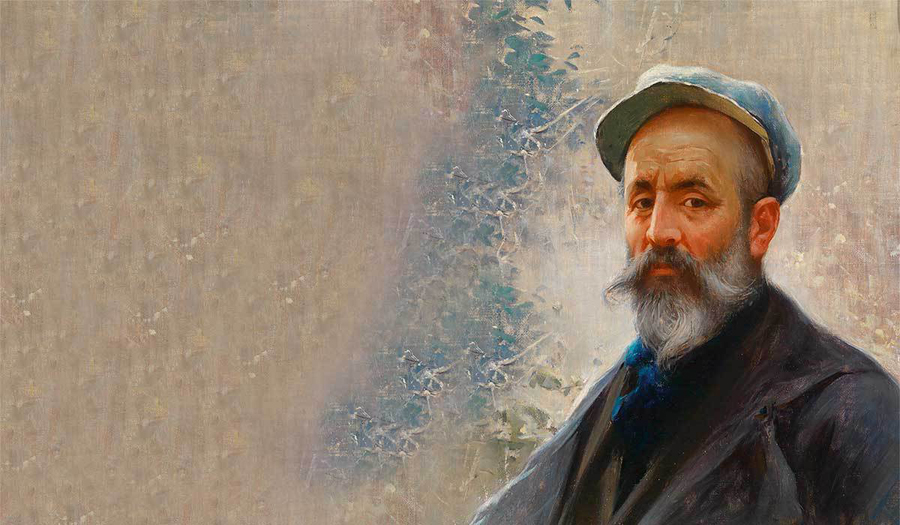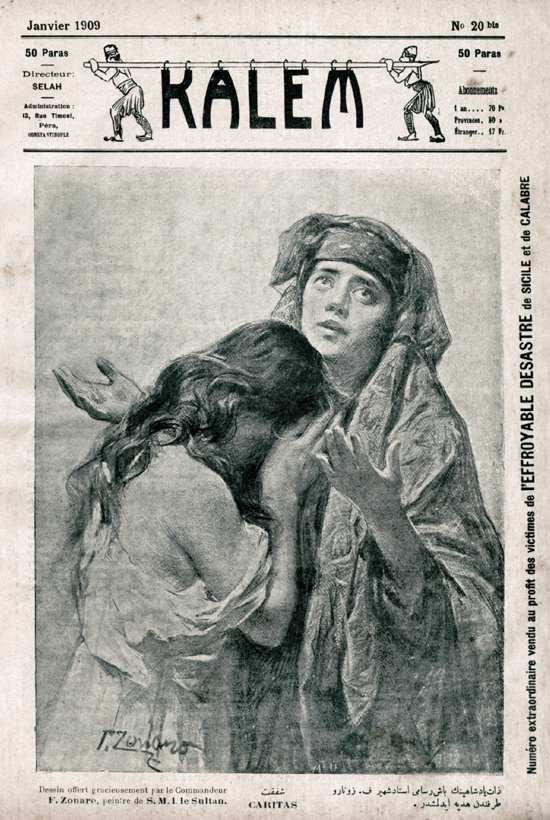
Ephemera
Zonaro Illustration
At dawn on 28th December 1908 the most destructive earthquake in recorded European history strikes the Straits of Messina in southern Italy, leveling the cities of Messina in Sicily and Reggio di Calabria on the Italian mainland. The earthquake and tsunami it caused killed an estimated 100,000 people. Not only was this earthquake followed by numerous aftershocks hampering relief efforts and killing some of the rescuers but a steady rain fell on the ruined cities, forcing the dazed and injured survivors, clad only in their nightclothes, to take shelter in caves, grottoes, and impromptu shacks built out of any materials salvaged from the collapsed buildings. Veteran sailors could barely recognize the shoreline because long stretches of the coast had sunk several feet into the Messina Strait.
Kalem (pen) was a weekly satire magazine published in Turkish and French translation between 3 September 1908 and 29 June 1911. This period is shortly after the 1908 Young Turk Revolution and the subsequent establishment of the Second Constitutional Era, forcing Sultan Abdul Hamid II to restore the constitutional monarchy with the revival of the Ottoman Parliament and bringing press and other freedoms. Kalem is considered the first Turkish magazine on satire and caricatures and works featured both Turkish and foreign (some Levantine) authors and artists. The magazine didn’t flinch from criticising both the Sultan and the İttihat ve Terakki (Committee of Union and Progress) ruling party so was under heavy government pressure and was forced to close after its 130th edition.
Fausto Zonaro (18 September 1854 – 19 July 1929) was an Italian painter, best known for his realist style paintings of life and history of the Ottoman Empire. In 1892, Zonaro and his wife moved to Turkey and lived in the Istanbul neighbourhood of Pera. In Istanbul, over time he gained patronage in aristocratic circles. Munir Pasha, the Minister of Protocol, who invited him to visit Yıldız Palace and meet the prestigious local artist Osman Hamdi Bey. He was employed in teaching painting to the Pasha's wife, and in this way Zonaro got to know the important artistic figures of Istanbul of that time. In 1896 he was nominated as the court painter (Ottoman Turkish: Ressam-ı Hazret-i Şehriyari) thanks to the intervention of the Russian ambassador who had presented the ruling sultan Abdulhamid II with Zonaro’s work ‘The Imperial Regiment of the Ertugrul on the Galata Bridge’, which Abdulhamid II had then purchased. Zonaro remained in Istanbul until 1909, when he returned to Italy following the Young Turk Revolution that overthrew his patron Abdulhamid II and the shift to constitutional monarchy. There would be no Ottoman court painter after him. He settled in San Remo where he continued to paint small works depicting the Italian Riviera and the nearby French Riviera until his death. So the above painting was probably one of his last in Turkey and the depiction was no doubt was symbolic as he couldn’t have been an eye witness.
The cover of the magazine states ‘extraordinary issue whose profits are for the victims of the frightful disaster of Sicily and Calabria’. The magazine cover also states the illustration kindly offered by ‘Commander’ F. Zonaro, ‘painter of H.M. the Sultan’, so clearly while he was still in that position, but clearly in the last months.
There was a major Italian origin Catholic community in Istanbul and other major Ottoman cities at the time with a high proportion coming from the traditional poorer zones of south Italy, so no doubt this earthquake had a major effect on the community who must have lost many relations in their homelands.
Preparatory drawing for the front page of Istanbul’s Kalem magazine, January 1909, charcoal, heightened with white, signed F. Zonaro, 44 x 30 cm, framed, sold in auction on 27.04.2017 for US $7,000 in Vienna, Austria.

An example of Zonaro’s work - Muslim dervishes and zikir dance.

Being a painter of a maritime city, Zonaro excelled in the urban and seascapes. Masts and minarets, smoke and mist, sails and clouds, light and water blend into some of the most evocative of all representations of Istanbul at the twilight of its Empire days.



